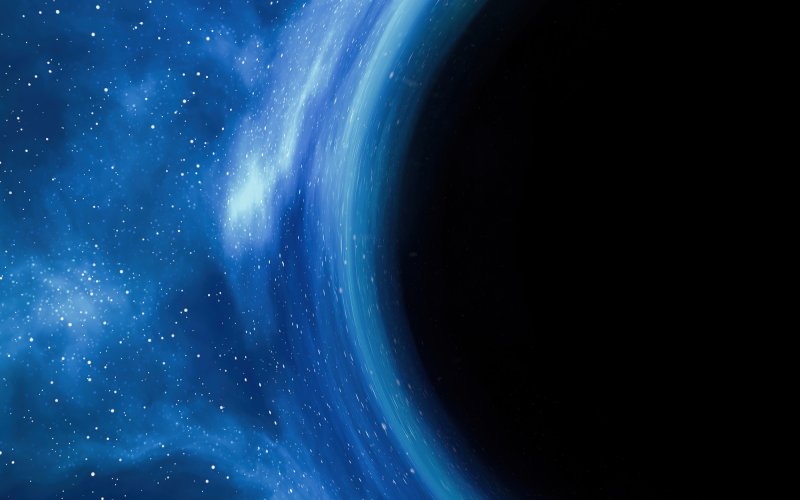If we wanted to find out how the Earth would have to change to become a “black planet”, all we need is Newton’s law of gravity and Newton’s second law. For light not to leave Earth, the gravitational force must be greater than the centrifugal force.
Gravitational force depends on the mass of Earth (6 × 1024 kg) and its radius (6,378 km), while centrifugal force depends on the radius of rotation (i.e., the radius of Earth) and the square of the speed—in the case of a “black planet”, the speed we are dealing with is equal to the speed of light. If we substitute the above values into the formulas, we find that for the Earth, the centrifugal force is much greater than the gravitational force, which means that light will always fly away from the Earth. If the Earth were to become a “black planet”, either its mass would have to increase or its radius would have to decrease. We would achieve equality between centrifugal force and gravitational force if the Earth’s mass were approximately 5 × 1033 — that is, a billion times greater than it is! Or it would have to be reduced (at the same mass) to a size of approximately 1 cm! In both cases, the density of the Earth would be many times greater than the density of an atomic nucleus. This is not a threat to us, so we do not have to worry that our planet will “suck us in”.
Finally, I would just like to add that the above calculations are based on classical physics; a more accurate solution is provided by the general theory of relativity, and in one of its solutions, 130 years after J. Mitchell, Karl Schwarzschild discovered the possibility of the existence of black holes. I find this solution both simpler and more interesting in that we can predict the existence of black holes without complex mathematical apparatus.
Confirming the existence of black holes took quite a long time (they have the property of being black and therefore invisible in the black universe), but today we are certain that black holes really do exist.
Want to ask something?
Send us an e-mail with the subject “Physics mysteries” to the address:
We can't wait to tackle your interesting questions!





